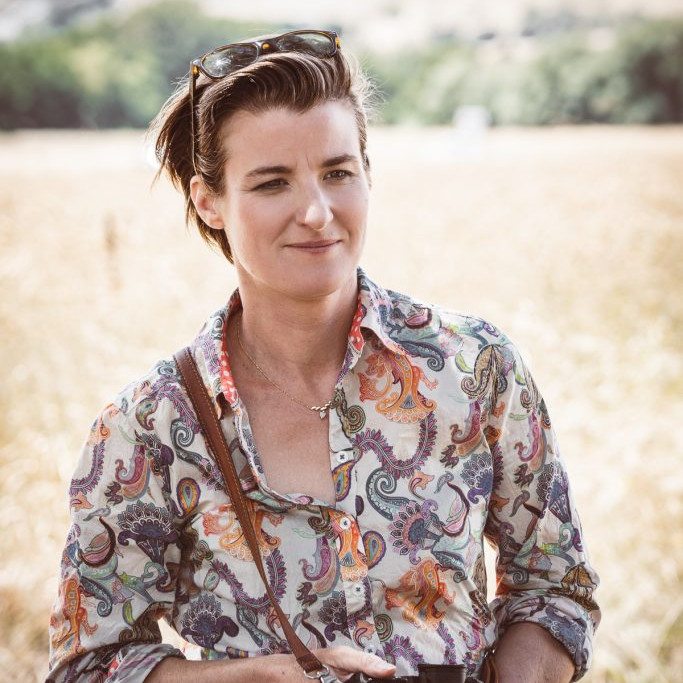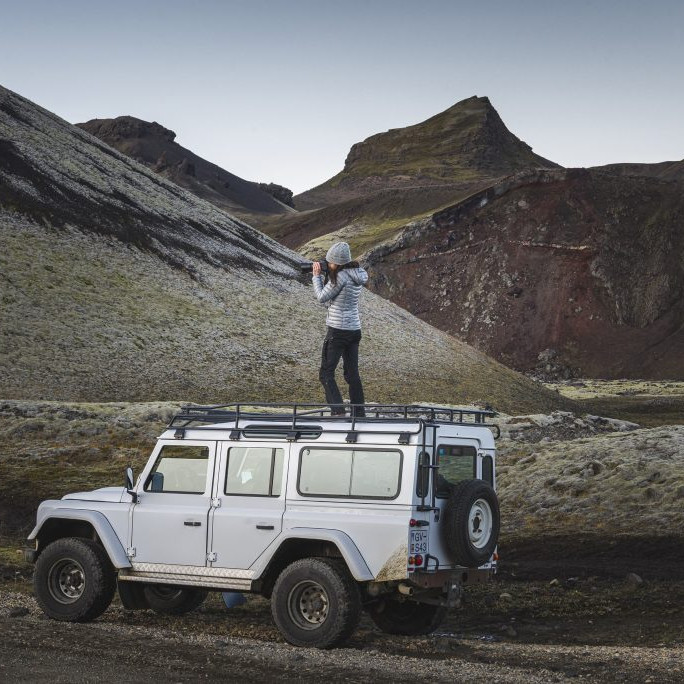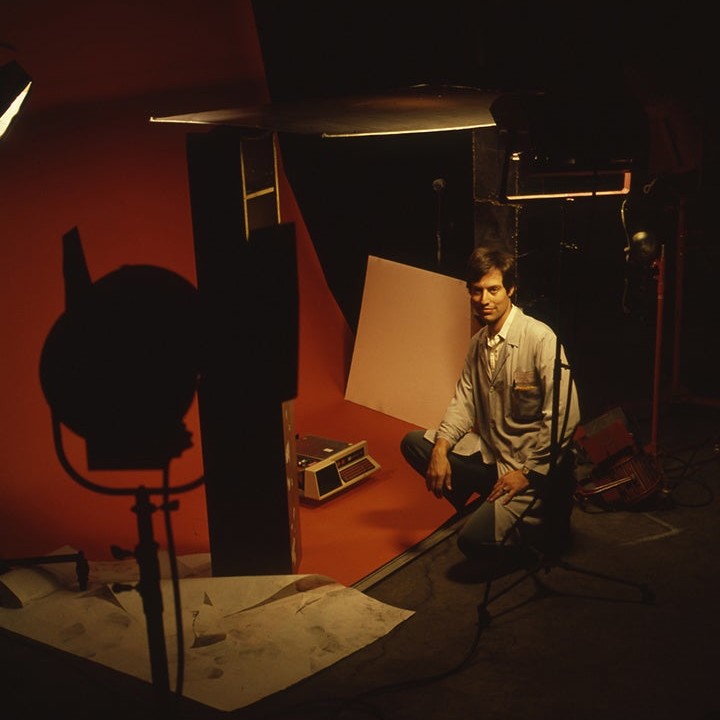Penelope McMorris Photographer
What made you change direction and start on a career in photography?
It was more a matter of “discovering” photography than of changing careers. I worked as the curator for Owens-Corning’s corporate art collection for eighteen years, was also a private consultant. In other words, I worked with the art of others. A photographer friend encouraged me to begin photographing in the mid-2000’s. I soon discovered the joy of hunting and stalking street life subjects as I travelled. The “Vanity Fair” photo was one of my first (2005) that pleased me.

Vanity Fair, 2005
Now retired from consulting, I consider photography a passion, not a career.
Where do you take your photographs?
Wherever I am out and about; particularly when traveling. Key West, Florida is one of my favourite cities. The resident’s welcome eccentrics and camera-toting tourists, I blend right in, just wandering and shooting all day. It is a city full of beautiful backgrounds, fascinating faces and friendly people.
The photographs are a snap shot or moments in time, discuss?
Unlike pre-planning and staging a photograph, I prowl the streets for subjects. This means I might encounter something intriguing the very next second. (Or not.) A site I photograph one moment might not even exist when I later revisit it. There is a feeling of capturing history that I enjoy. There is a tropical mural on the wall of the Hilltop Laundry in Key West that I adore — each year I check to ensure it has not been painted over, knowing it will happen one day.

Hilltop Laundry, 2007
Another “moment in time” photo came when St. Paul’s in Key West was fumigated, and I happened by just as a workman removed the canvas coverings. If you know the photo’s story, there’s no mystery. But if you don’t….

St. Paul’s, 2017
If you have stopped photographing during the pandemic what has caused this freeze?
I’m still out walking and looking. But generally, only see random dog walkers out in my small Ohio town. I’m not inspired to shoot pandemic shots because face masks hide the expressions which would interest me. I’m not a photographer of empty stillness. Plus, I know others are documenting our strange and scary time beautifully.
Can you expand on how you photograph people imposed over other images?
As I travel, I often come across street art unexpectedly. Being fascinated with faces, I try to find an opportunity to photograph a passer-by in a way that makes the person appear to be interact with the art. My husband and I spent an afternoon in Osijek, Croatia last year and in walking noticed a large street portrait. (I’m sorry I don’t know the artist.) This was one of the few times I “lay in wait” for the perfect person to pass by, although I only had several minutes as we were late for a meeting. I hoped to capture a pretty girl, so the street portrait would appear to be ogling her. But then a man walked by. I liked his purposeful stride and felt it worked.
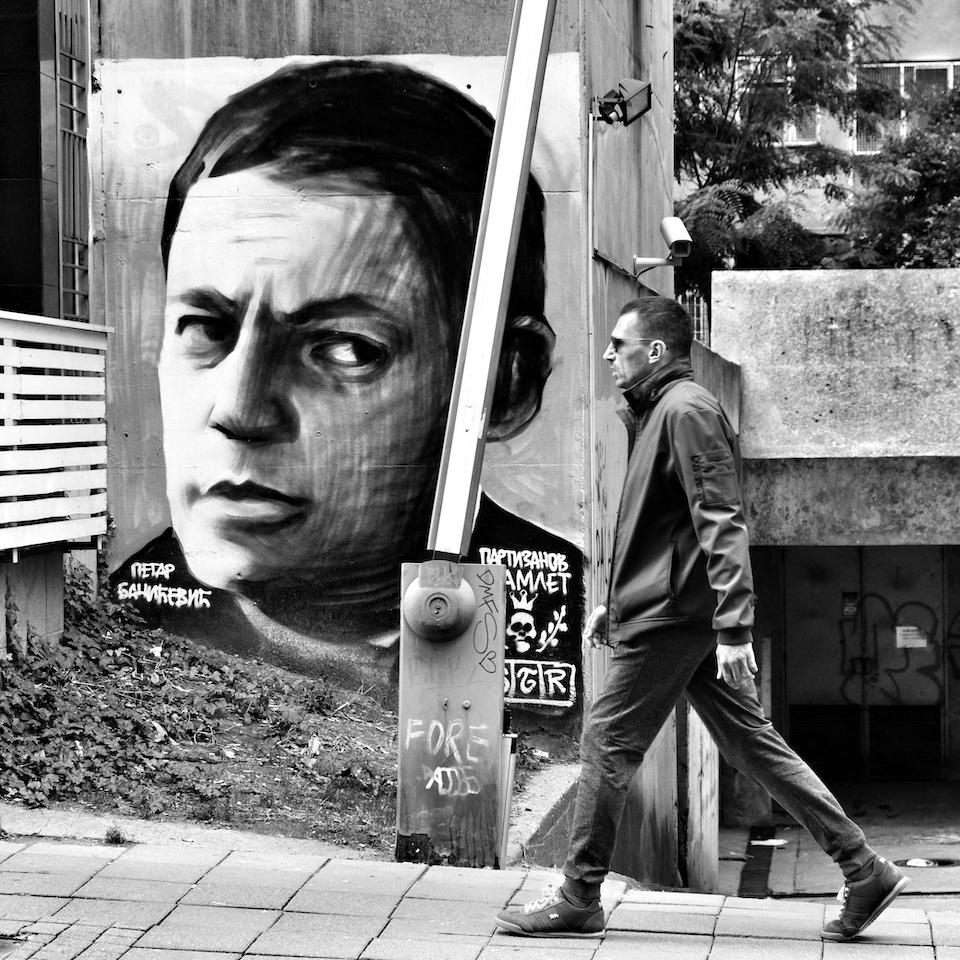
Watcher in Osijek, 2019
Another time we were walking in Edinburgh. I turned my head as we passed an alley and saw this amazing mural by Smug. A few people were walking beneath it, and luckily, I always have a camera. This photo is one of my favourites.
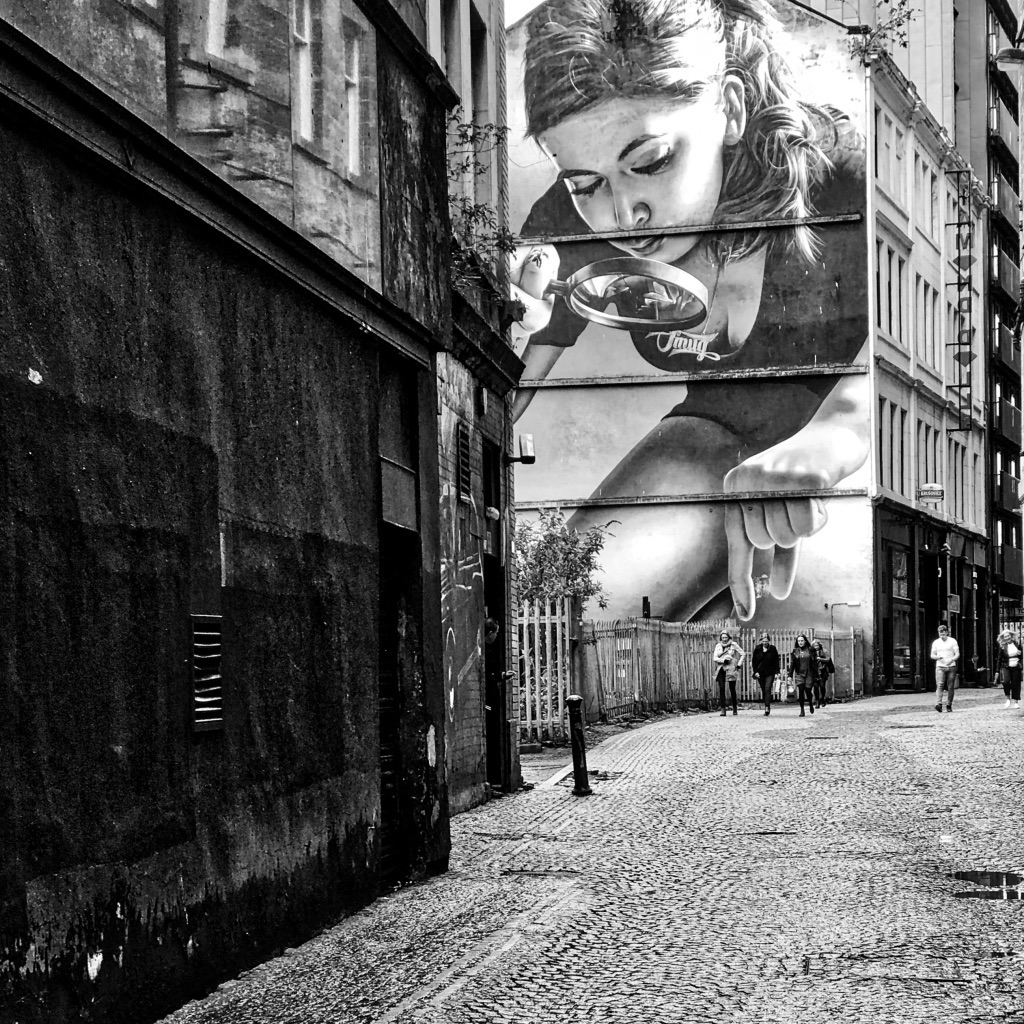
Catcher, 2017
Comment on finding photo opportunities with advertising.
Adverts are all around us — posters, signs, billboards, marquees. I love the graphic quality they add. I saw a wonderful poster-filled wall in Paris. When a young man past I took my picture, only seeing later the space I had centred him in was surrounded by the phrase “Kill the Young.” Thinking that a bit macabre I researched. It’s the name of a British band.
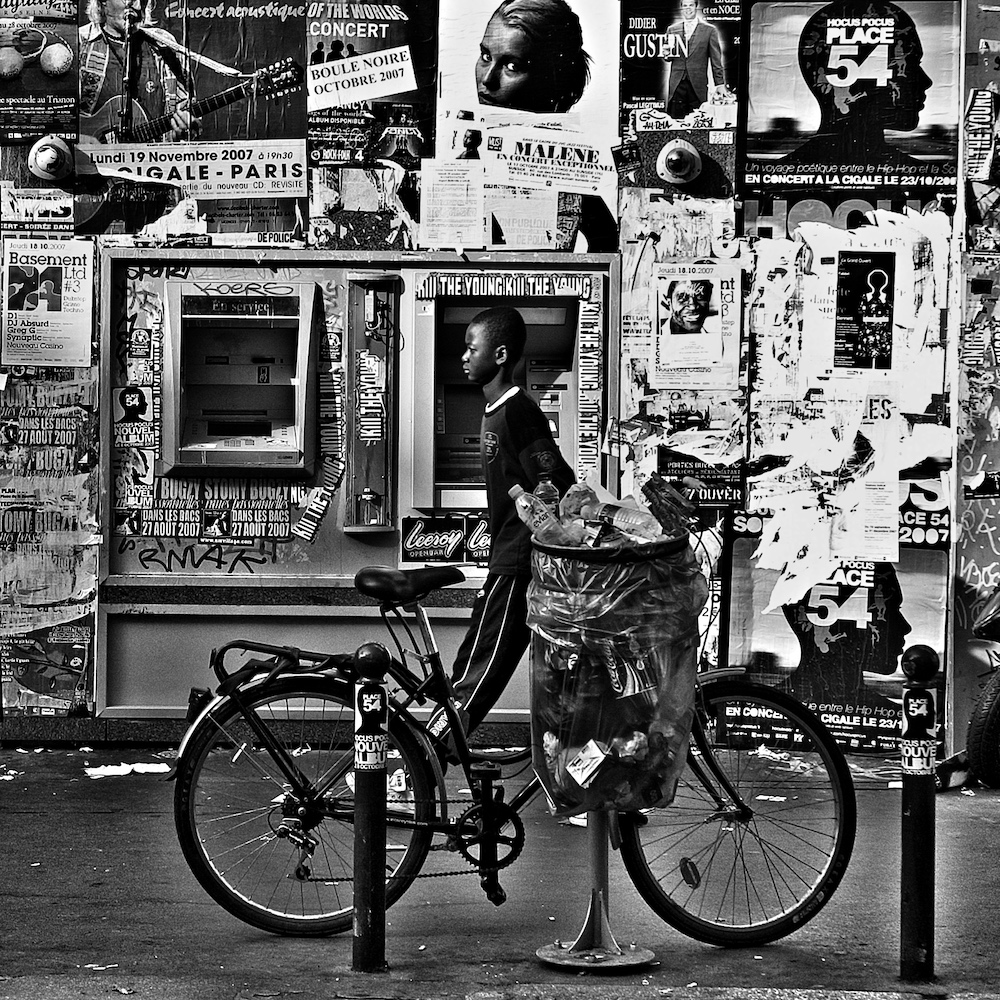
Kill the Young, 2007
How did your series, ‘Mannikins’ come about?
Like many people, I love mannikins. (And they’re most cooperative about having their picture taken.) And because they are typically behind glass, there is the additional potential of reflections. I was struck by the difference in mannikin scale in this shop window I saw fleetingly from a London bus. A rain-coated pedestrian walked by and I liked the way his legs seemed momentarily attached to the mannikin behind him producing a “what’s happening?” moment in my photo.
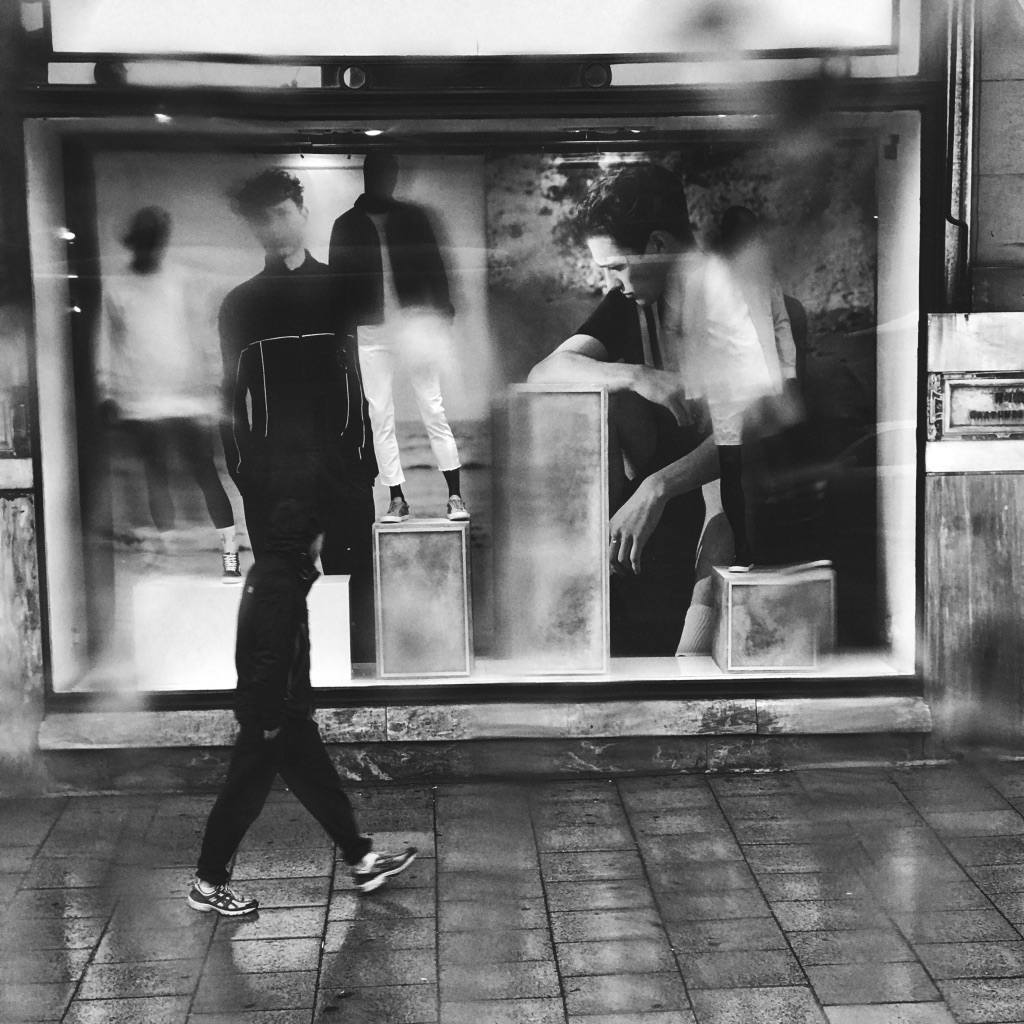
London Rain, 2017
In another window, I did a double-take noticing what appeared to be a woman’s leg attached to a tuxedo clad male — as if someone had playfully added extra body parts to this mute figure.
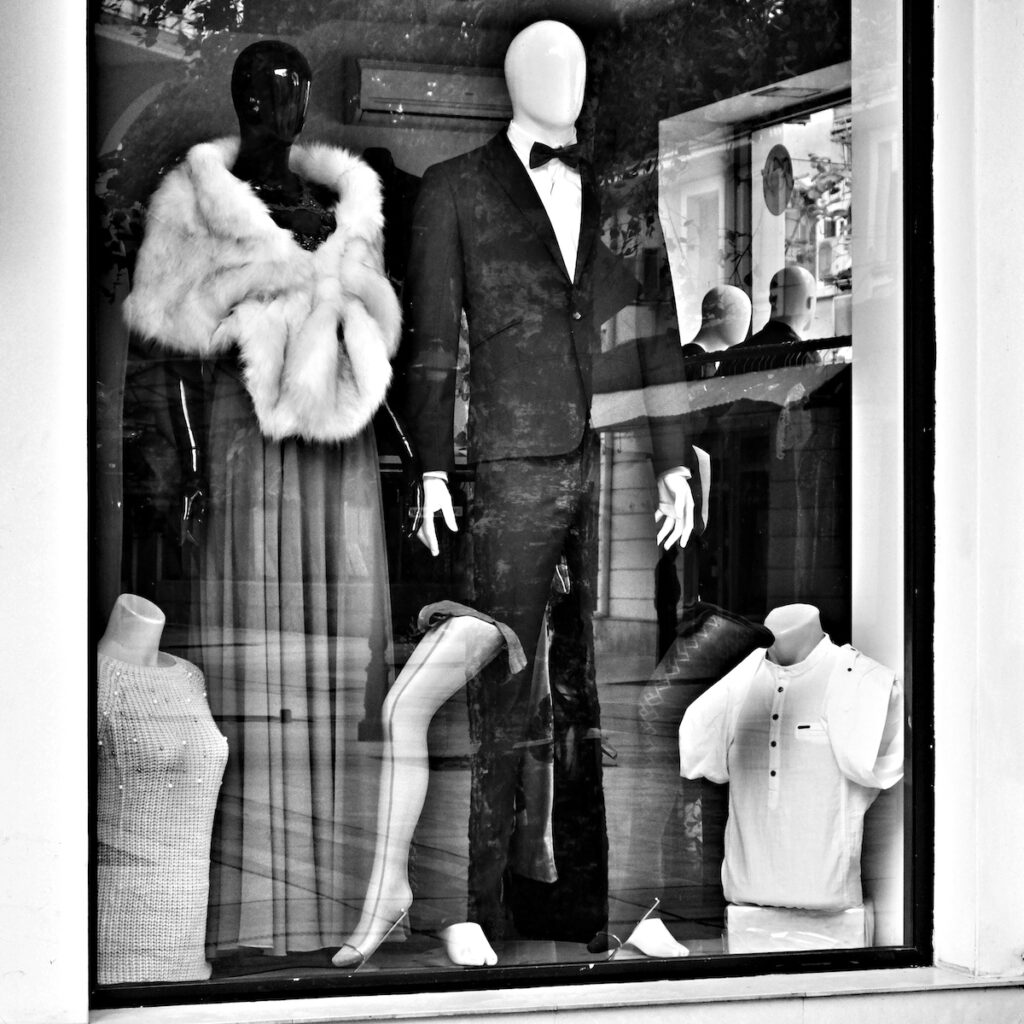
Fancy Footwork, 2019
Discuss the darker side of your photographs in ‘Encounters’.
Perhaps because I’m tranquil by nature, I’m drawn to hotter, more mysterious subjects and faces suggesting a deeper story. (Just as I like Noir movies….) I never take pictures homeless people, or to make fun of anyone. I always start up a conversation (before or after I make my picture), to explain what about them caught my eye. That’s why I consider it an encounter — we meet, we chat, and hopefully I leave them, feeling good about themselves. At least that is always my intention.

Graffiti Alley Dancer, 2019
Why do you restrict your photography to Black and White?
I like the strong graphic quality of black and white. I love colour and shoot “pretty” pictures with my iPhone for fun, but find colour distracts from the mood or story I seek in my serious work.
You comment, “I like the exciting idea of images on glass.” Discuss this using two images.
Reflections depend on time and weather, as well as what is happening both through the glass, and behind the camera. They offer tantalizing potential possibilities from moment to moment. In this photo, a gentleman sat on a chair in Starbucks. I noticed he appeared to be sitting sideways in a station wagon (actually parked on the street behind me). If he’d shifted position the strange juxtaposition would have been lost.
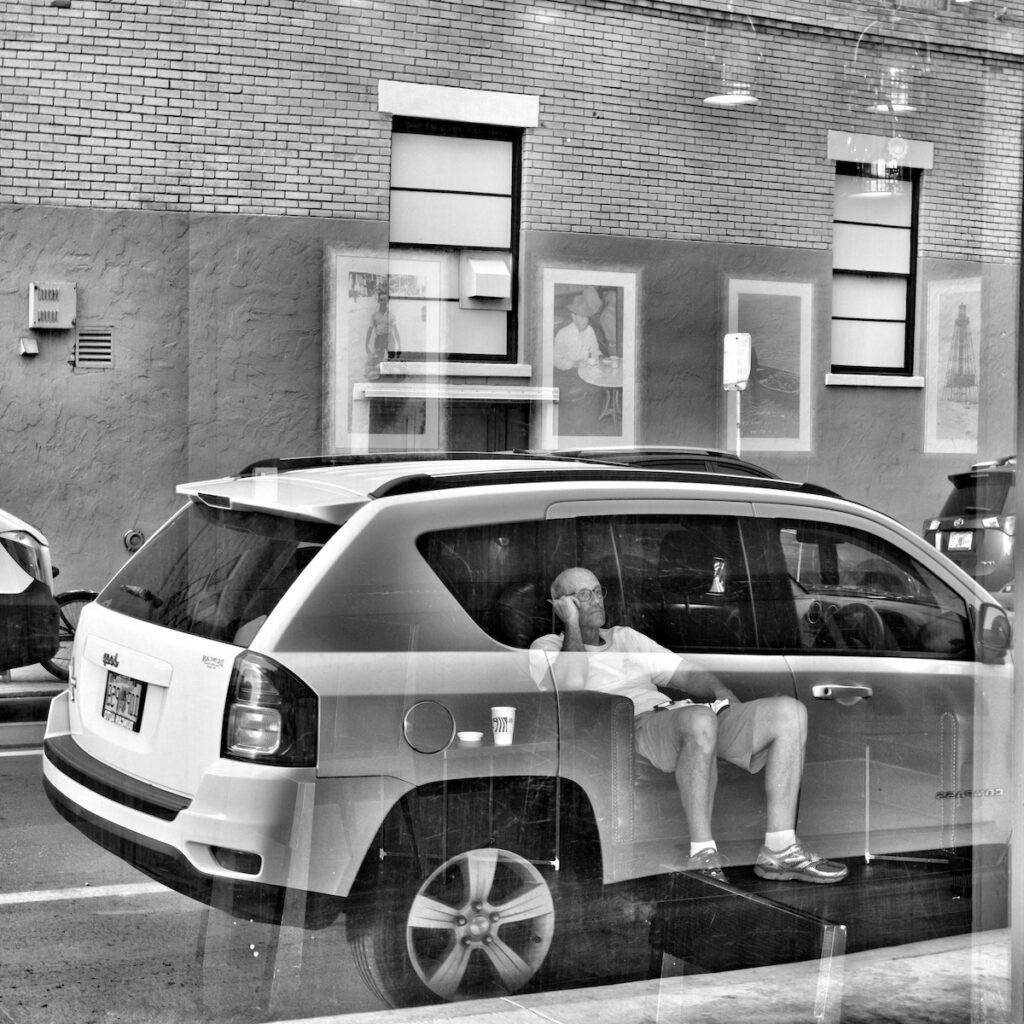
Lounger, 2019
Another day I passed a gallery which I knew had a large painting of Marilyn Monroe. While I searched for a subject, a semi pulled up directly behind me, bearing a beefcake photo of a grinning man clad only in shorts. I could see my shadow blocking part of the truck’s reflection. But it wasn’t until I saw the photo that I noticed Marilyn’s eye revealed in my shadow. I love surprises like that.
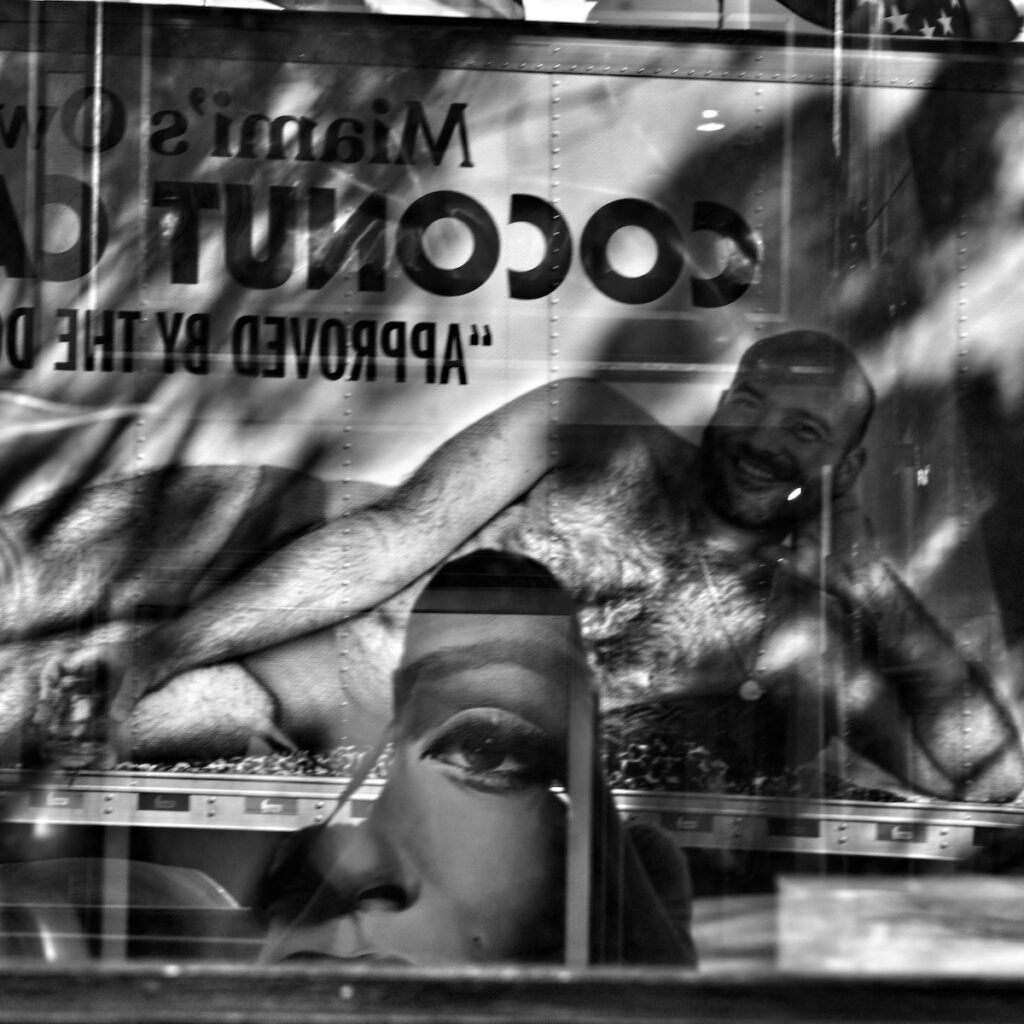
Marilyn’s Eye, 2020
Contact:
Penelope McMorris
Website: www.penelopem.com
Email: pennymcmorris@gmail.com
Deborah Blakeley, Melbourne, Australia
Interview by Deborah Blakeley, July 2020
Think a colleague or friend could benefit from this interview?
Knowledge is one of the biggest assets in any business. So why not forward this on to your friends and colleagues so they too can start taking advantage of the insightful information the artist has given?
Other artists you may be interested in:



